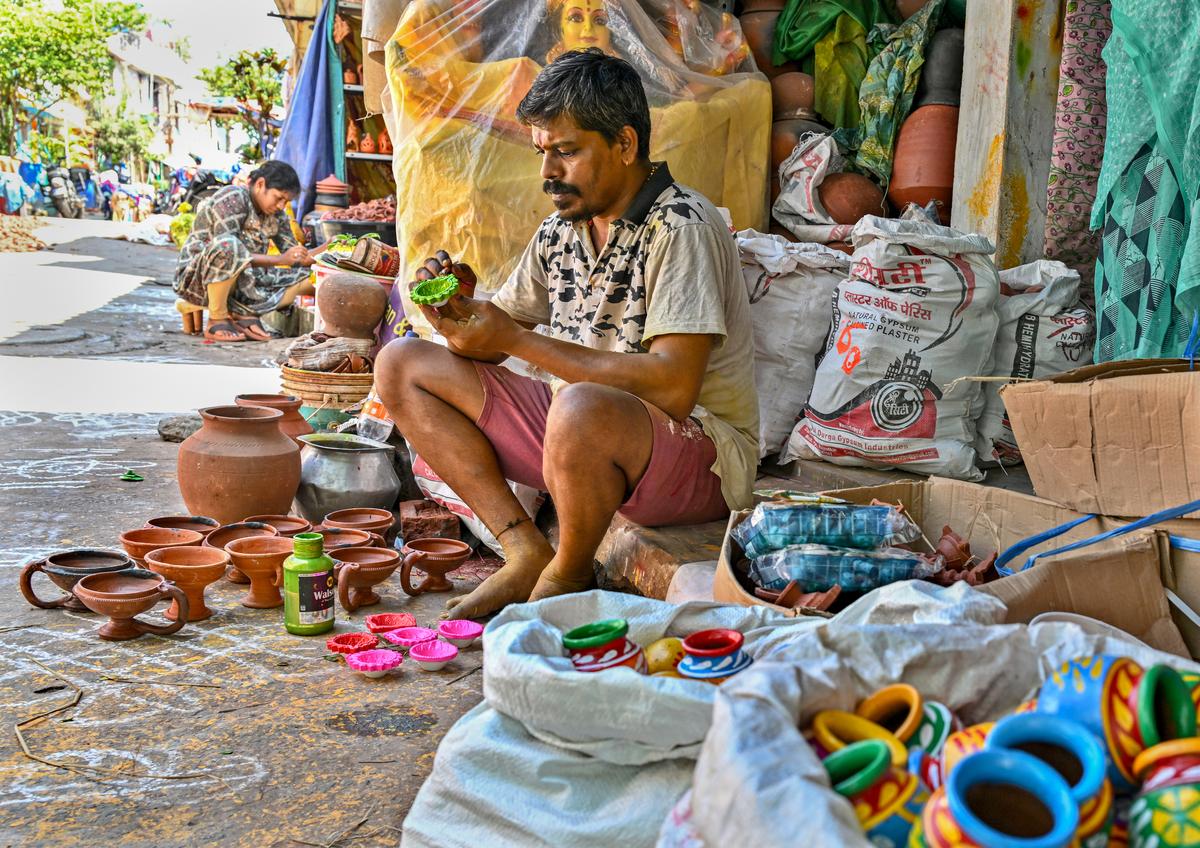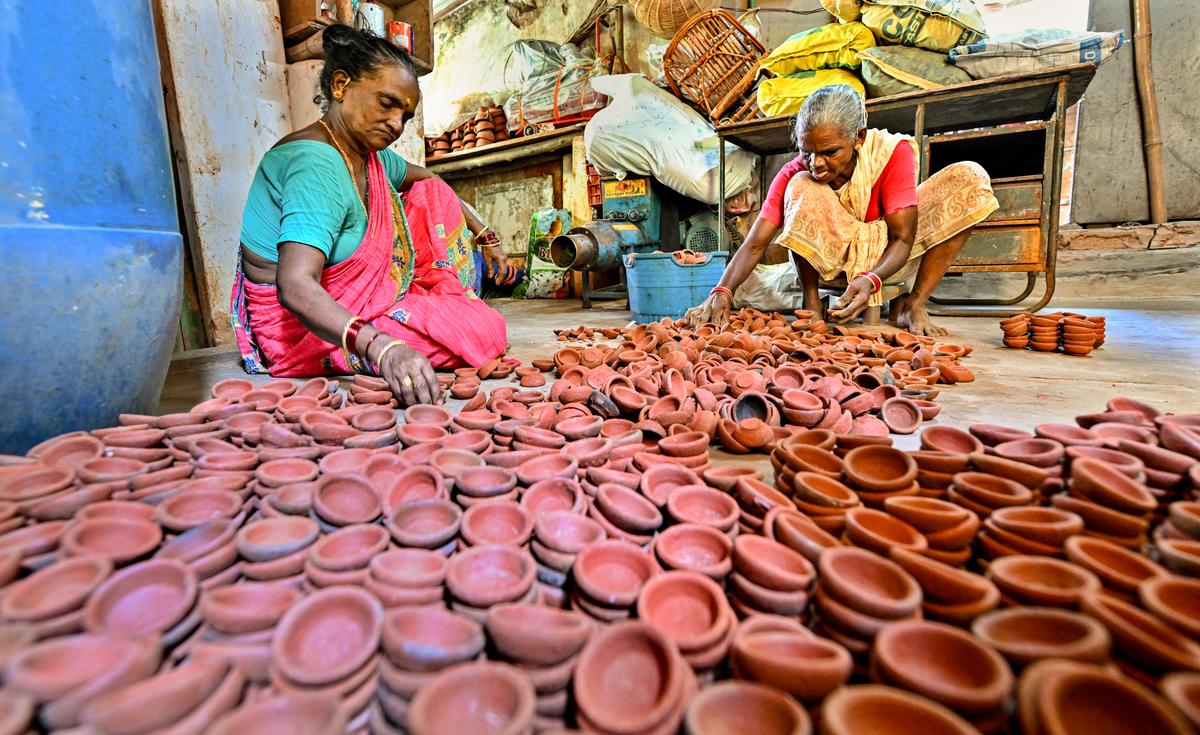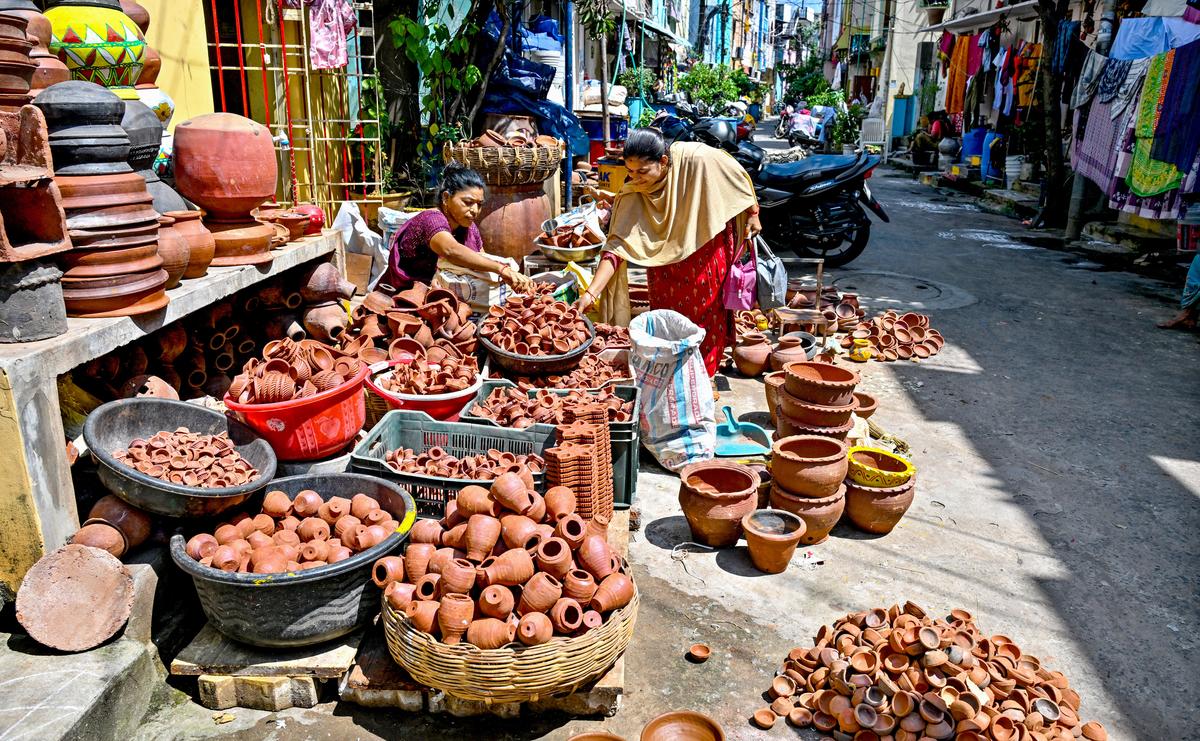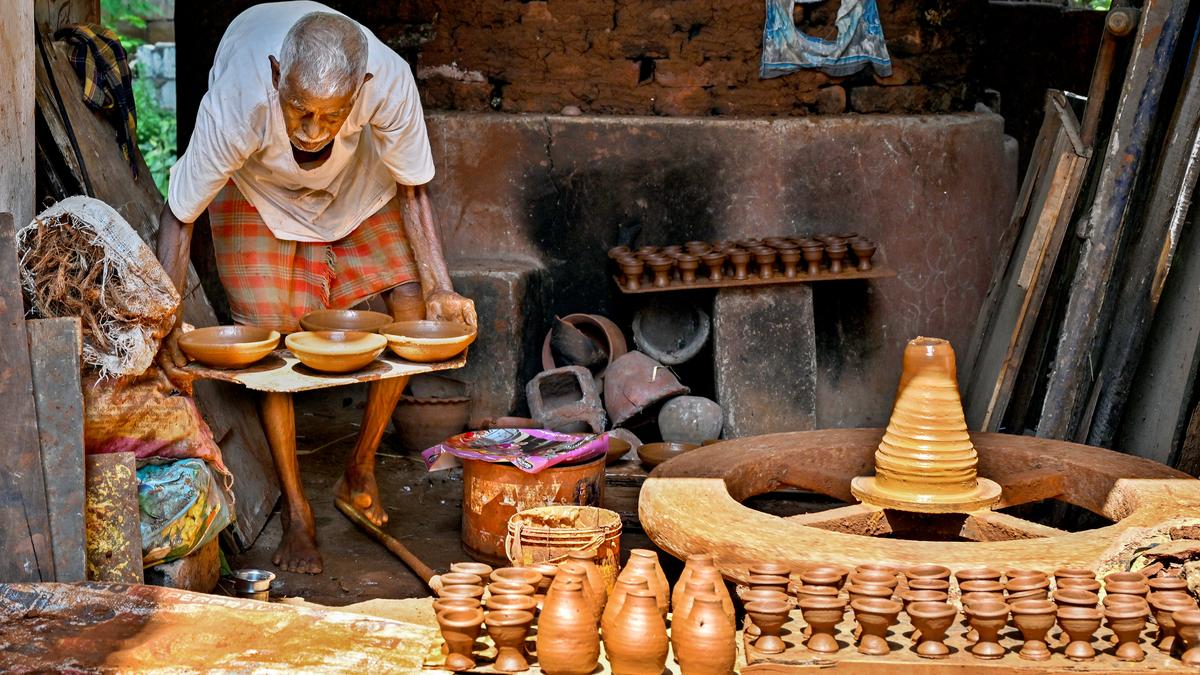“Some of us still make them, some bring them from elsewhere, but the deepam must come from Kummari Veedhi every Deepavali,” says Gowri Shankar, his hands dusted with fine clay as he lines up freshly painted lamps along the low wall of his frontyard. The winding lanes of Kummari Veedhi (the potters’ street) in Visakhapatnam has long been a quiet emblem of the city’s handmade traditions. Today the methods may have changed, but the essence of the craft and the devotion that shapes it, endures.

Gowri Shankar paints deepams in front of his houses, ahead of Deepavali, at Kummari Veedhi (potters’ street) in Visakhapatnam.
| Photo Credit:
KR Deepak
The word kummari means potter and for the decades, this cluster of homes in Akkayyapalem has been the centre of earthenware in the city. Once, nearly 40 families here made their living from clay. Each home held a wheel, every house carried the fragrance of wet earth and the rhythmic spin of pottery was as familiar as the sound of temple bells. Like the story elsewhere, the years that followed saw the number of potters dwindling. But Kummari Veedhi still comes alive in the weeks before Deepavali.
Even at 94, Srikakulam Parades, the oldest resident of the colony, continues to work at his wheel. His small veranda is stacked with deepams, bowls and flower pots. “Almost everyone knows him,” says his granddaughter-in-law, Yellaji. “Photographers and schoolchildren come to meet him every year before Deepavali. They call him thatha (grandfather).”
A traditional potter making deepams on the potter’s wheel ahead of Deepavali at Kummari Veedhi in Visakhapatnam.
| Photo Credit:
KR Deepak
Born into a family of potters, Parades has seen the craft transform from an all-season occupation to one that now flourishes only during festivals. “Deepavali or not, he keeps making the diyas,” says Yellaji. “It keeps him busy, and he insists on working on his own.” His hands tremble as he works, but the lines of every diya are sure, shaped by decades of memory.

Women segregating dried earthen lamps ahead of Deepavali, at Kummari Veedhi (potters’ street) in Visakhapatnam.
| Photo Credit:
KR Deepak
Kummari Veedhi is at its busiest on Sundays. The narrow lanes are filled with the chatter of potters, a few who work on the wheels. Women sit together, painting diyas in bright reds, oranges and golds, while a few men mould flowerpots and bowls from clay sourced from Simhachalam. A truckload of clay costs about ₹10,000, shared among families who still make their own ware. The smaller deepams are sold at ₹100 for a hundred pieces; a dozen small flowerpots fetch about ₹60.
“The demand is seasonal, but the tradition doesn’t stop,” says Gowrishankar, whose family has been part of the colony for generations. After his father, one of the senior potters, passed away, he began sourcing deepams from Chennai to meet wholesale orders. “We don’t make as much now, but people still come here every year because Kummari Veedhi deepams have a name,” he explains. “We keep both, what we make and what we bring; so that no one leaves without a deepam.” This year, his order book lists over three lakh flowerpots in 30 different models and sizes and 15 varieties of deepams.

Woman selling deepams in front of her house, ahead of Deepavali, at Kummari Veedhi (potters’ street) in Visakhapatnam.
| Photo Credit:
KR Deepak
Across the lane, Madhavi, another resident, arranges a row of painted deepams on the floor. She remembers the time when the entire street worked together to fill truckloads of earthenware before Deepavali “My childhood was spent beside the wheel,” she recalls. “My father would turn the clay, and I would help paint the deepams. Now I buy some from outside, but I always make a few on my own. It is our way of keeping the house connected to what it once was.”
There is quiet pride in that statement, one echoed by many in the colony. While the city around them has changed rapidly, the families of Kummari Veedhi have held on to the identity their street was named for. Each home bears signs of the trade: shelves lined with pots, traces of clay on the floor, a corner where deepams dry in the afternoon sun. Even those who no longer make pottery keep the connection alive by sourcing earthenware from elsewhere.
“All of us may not sit at the wheel any more,” says Madhavi, “But every house here still lights deepams made of clay.”
As dusk settles, buyers arrive to collect their orders, chatting with the potters about prices, clay and transport. The air smells faintly of smoke and wet earth. Children help stack the deepams, giggling as they try not to break the delicate rims.
A little ahead of where the lane begins, Parades finishes his day’s work at his workshop. Wiping his hands clean of clay, he leans over at the lamps drying in rows before him. “As long as these deepams burn,” he says softly, “Our name will not fade.”
Published – October 16, 2025 04:55 pm IST

